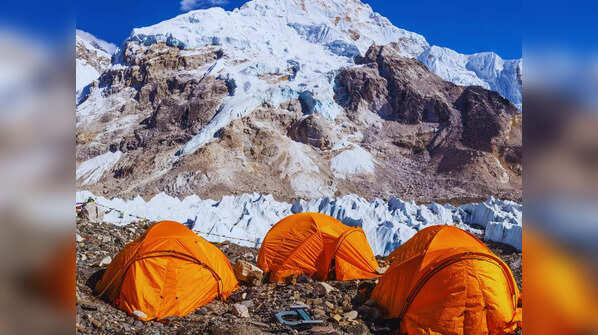Everest above, smog below: The two faces of Nepal

Everest above, smog below: The two faces of Nepal
Our world is changing day-by-day, but when it comes to Nepal, the change has been dreadful! The country which was once globally recognized for its natural beauty, as the proud home of Mount Everest—the highest peak on Earth—is now going viral for far less glorious reason.
The world woke up to the news on April 7, 2025 that Kathmandu, the capital of Nepal, has now become the world’s most polluted city by IQAir with an Air Quality Index (AQI) of 279 and PM2.5 levels reaching a staggering 204.5 µg/m³!
This means that Kathmandu has crossed a dangerous level, which is not good for its population and travellers.

From Everest to smog
For a long time, Nepal has been associated with beauty, nature and Mount Everest. The country is admired for its stunning landscapes, serene spirituality, and the mighty Mount Everest. Tourists and adventurers alike once flocked to the country for its mountain air and natural wonders. But of late, the capital city Kathmandu was named the most polluted city in the world by IQAir.

Shocking numbers
According to IQAir’s data on April 7, 2025, Kathmandu recorded an Air Quality Index (AQI) of 279 and PM2.5 levels of 204.5 µg/m³. These microscopic particles are known to cause respiratory and cardiovascular issues, particularly for kids, the elderly, and those with pre-existing conditions. Nepal residents have reported constant eye irritation and breathing difficulties.

A perfect storm of urban pollution
Kathmandu’s geography plays a major role in its pollution crisis. Located in a valley surrounded by hills, the city experiences a “bowl effect” that traps air pollutants. Add to that rapid urbanization, an ever-growing number of diesel vehicles, reliance on biomass for fuel, open construction sites, and weak environmental enforcement—it's a perfect storm for chronic air quality issues.

Government response
Though the government has initiated measures like promoting electric vehicles and imposing restrictions on polluting industries during peak periods, efforts remain reactive and inconsistent. Infrastructure has not kept pace with urban sprawl, and environmental regulations often lack enforcement.

A wakeup call
Kathmandu’s descent into pollution stands in stark contrast to Nepal’s identity as a haven of clean air and natural beauty. Yet, this crisis also presents an opportunity. With stronger policies, community action, and a shift toward sustainable development, Nepal can still reverse the trend. The journey from Everest’s majestic heights to Kathmandu’s polluted streets is a cautionary tale—and a powerful call to protect what remains.








